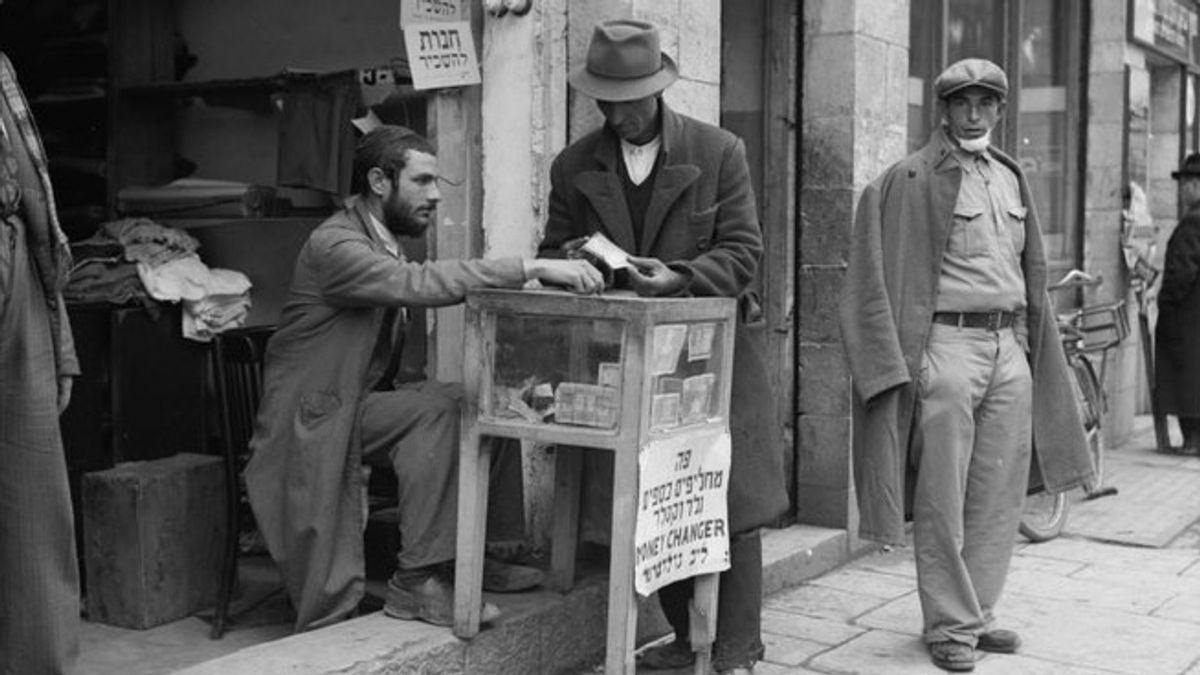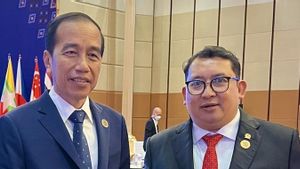JAKARTA - For a long time, Jakarta was a multi-ethnic city. Various ethnic groups have been present in Jakarta since time immemorial. Including the Jews. Even though there were not as many as Europeans, Jews became an important part of driving the economy. Batavia also shared Jewish migration. But in the heart of the Indies the Jews mingled.
They are reliable in all fields, both as soldiers, traders, to government employees. The Jews lived in prosperity. They fuse well. Even than Hebrew, they are more fluent in everyday Dutch and Malay.
The arrival of the Jews to the archipelago was closely related to the conquest of Jayakarta - which was later changed to Batavia - by the Dutch trading association, the VOC in 1619. The conqueror of Jayakarta, VOC Governor General Jan Pieterszoon Coen encouraged large migrations of Europeans and others to settle down. in Batavia.
At the same time, the Jews, Chinese, Moors, Japanese, and native peoples (Malay, Balinese, Bugis, Ambonese) became important elements of the Batavian population. At that time the Jewish population was not only in the city of Batavia. They were also in Ommelanden, an area outside Batavia.
Some of them live in Noorwijk (Jalan Juanda) and Rijswijk (Jalan Veteran). Many of them work as traders by opening large shops and hotels in the area. They sell watches, gold, diamonds, gems, watches, glasses and other commodities.
Jacob Saphir's exploration
The toughness of the Jews as merchants at that time can be seen from the success of the Oleslaeger, Goldenberg, and Ezekiel families. A clearer picture of the Jews in Batavia is also revealed by the writer Jacob Saphir (1822-1886).
Jacob Saphir explored the city nicknamed the Queen of the East for nearly seven weeks in 1861. The Jewish writer mentioned that there were 20 Jewish families from Germany (Hannover and Frankfurt) and the Netherlands (Amsterdam and The Hague) who lived in the heart of the Dutch East Indies, Batavia. Their job classification is as traders, soldiers, to retirees.
“Saphir's expertise in extracting information first started with visiting a Jewish elder who must have kept a lot of information about his compatriots in Batavia. William Hachgezunt, who arrived in Batavia during the Revolution, was this elder. Arriving for the first time in Batavia as a Dutch soldier, trading was a profession he practiced after leaving the Military Service, ”said Saphir, quoted by Romi Zarman in the book Under the Power of Antisemitism: Jews in the Dutch East Indies 1961-1942 (2018).

"Perhaps the more promising economically promising Indies lands have encouraged him to prefer to settle down permanently rather than return to Europe. The world of commerce under the Tricolor Flag (read: the Dutch flag) demands full integrity from the people who are involved in it, "he added.
However, Hachgezunt's success and prosperity came at a cost as his Jewish identity faded over time. The comfortable life in Batavia eliminates the epistome (essence) of Judaism that he acquired when he was young.
One of the causes is cultural assimilation through marriage. Jacob Saphir noted that the number of Jews who married native women was quite high. Unexpectedly, marriage has become a massive medium of cultural exchange. That is, the children who are produced through marriage usually follow the culture and lifestyle of the mother.
Famous Jew in BataviaIt is possible that Jacob Saphir's wanderings give a broad picture of the wealthy Jews in the Betawi land. However, long before the arrival of Jacob Saphir there was already a soldier of Jewish descent named Jahoede Leip Jegiel Igel.
He is known as the richest Jew in Batavia. However, before becoming wealthy, the soldier who was born on April 22, 1755 was only a poor soldier. His daily duties were guarding the house belonging to the Governor-General of the VOC, Reinier de Klerk (1777-1780).
One time he fell asleep while guarding the house. The soldier was then sentenced to caning. In his heart he vowed that one day he would buy the Governor General's house. The dream was a form of revenge for being laughed at by other soldiers.
Ulam's beloved pukuk arrived. He left his service as a soldier. He recovered a new way of life as a goldsmith and moneylender. He also changed his name and became fully known as Leendert Miero.
Even though Leendert Miero is illiterate, perseverance in doing business is his main provision for becoming a rich person. He not only bought Reiner de Klerk's house - now the National Archives Building - but also bought a luxury house in the Pondok Gede area.
His work as a loan shark led the Dutch to generalize all Jews with the term "Judes." The term is taken from the Betawi language which means someone who is crooked, cunning, cheating, envious, and evil. In the Big Indonesian Dictionary, Judes is defined as being irritable and yelling at or hurting people's hearts; curt; sharp mouth.
"Actually, Judes, from (the word) Judas, the name of a disciple of the Prophet Jesus who betrayed - which was said by the Dutch to generalize all Jews. Especially, those who become moneylenders, ”wrote Alif Danya Munsyi in book 9 of 10 Indonesian words are foreign (2003).
Apart from Leendert Miero, there were other Jews who were known for their achievements. He is Mr. GJ Biscchop. The first mayor who led Batavia from 1916 to 1920 had many achievements.
He has even pioneered many developments, especially service facilities for the people of Batavia City, including being the driving force in the construction of a piped water installation from Ciomas-Bogor to Batavia (1918-1920).
"He also pioneered the eradication of the Malaria mosquito (Malaria Bestrijding) by drying and stockpiling several swamps and ponds belonging to residents around Batavia, especially northern Batavia, such as in Tanjung Priok, Angke, Kemayoran, Jembatan Merah, Pademangan, and sunter in 1919," he added. Zeffri Alkatiri in the book Jakarta Got a Way (2012).
Due to his efforts, Batavia became more dynamic, humane and developed. As a token of appreciation for his services, the colonial government named a park with his name: Burgemeester Bisschopplein which is now Taman Suropati. Mr. success. Biscchop paved the way for other Jewish descendants to enter and have a successful career in the Dutch East Indies government.
"Among them were those who got high positions in the Dutch East Indies government. Like Alidius Tjarda van Starkenborgh Stachouwer, the last governor general of the Dutch East Indies who surrendered when Japan invaded Indonesia, "concluded Alwi Shahab in the book Betawi: Queen of East (2002).
* Read other information about HISTORY OF NUSANTARA or read other interesting writings from Yudhistira Mahabharata.
MEMORY OtherThe English, Chinese, Japanese, Arabic, and French versions are automatically generated by the AI. So there may still be inaccuracies in translating, please always see Indonesian as our main language. (system supported by DigitalSiber.id)










